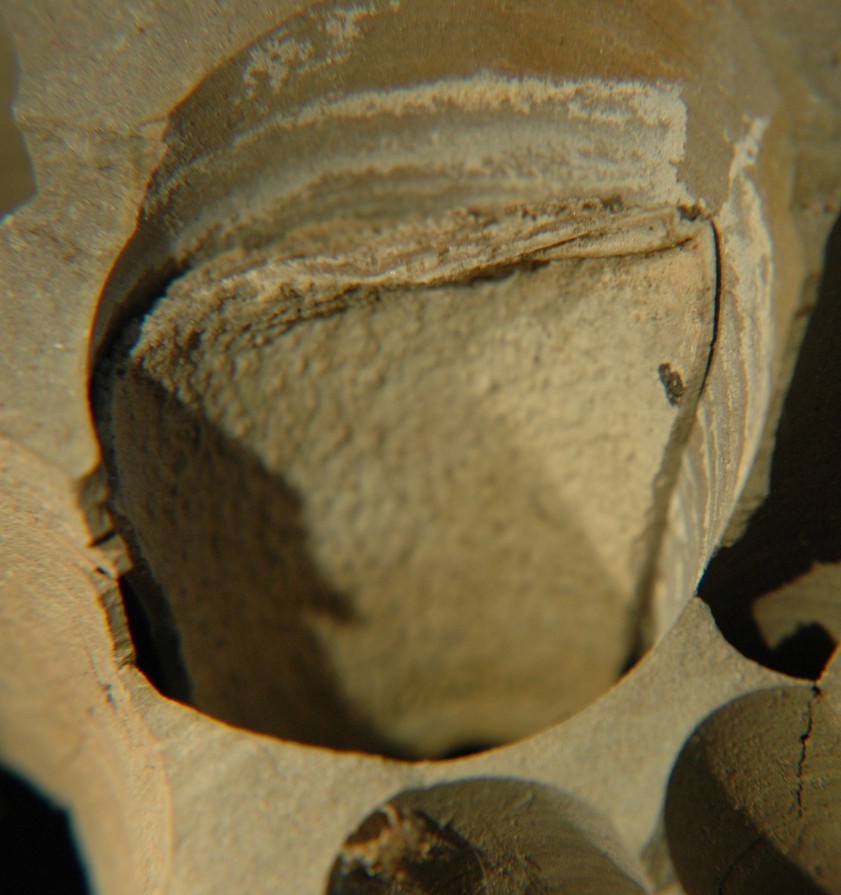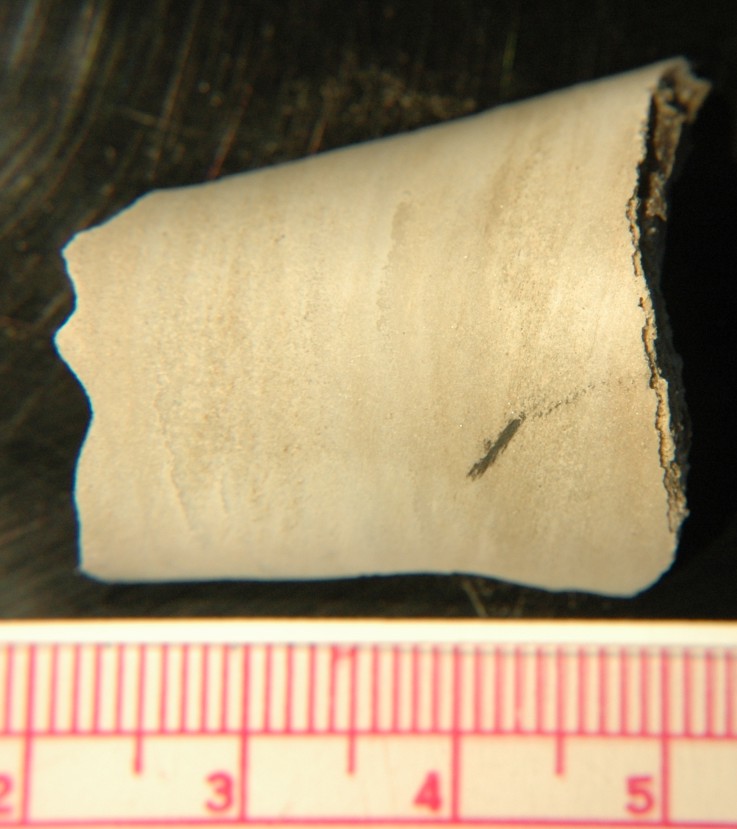Parapholas californica Conrad, 1848Common name(s): California Piddock, Scale-sided piddock |
|
| Synonyms: | 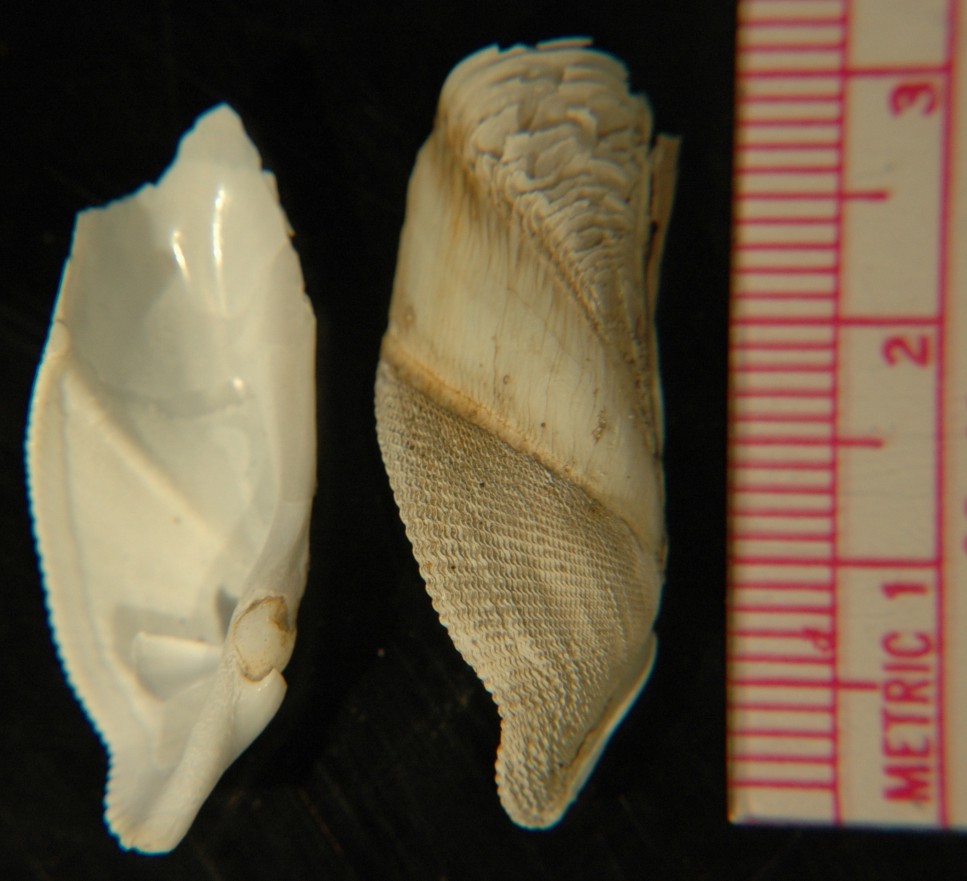 |
| Phylum Mollusca
Class Bivalvia Subclass Heterodonta Order Myoida Suborder Pholadina Family Pholadidae |
|
| Shell of an immature Parapholas californica found in broken shale near Santa Barbara, CA. The anterior, boring end is downward in this view. Note the large myophore inside the shell near the hinge. | |
| (Photo by: Dave Cowles, January 1996) | |
How to Distinguish from Similar Species: The distinctive, overlapping chitinous plates on the posterior end are one unique characteristic of this species.
Geographical Range: Oregon to Baja California, Mexico; Common from Bodega Bay south.
Depth Range: Subtidal to low intertidal
Habitat: Usually in shale, sometimes in hard mud or hard silicious chert. In the intertidal zone it is mainly found in large rocks at low tide level.
Biology/Natural History: To bore their hole, pholads extend the foot from the gape in the anterior end of the shell (see photo) and apply it to the base of the burrow as a sucking disk. The anterior part of the anterior adductor, as well as the ventral adductor muscles contract, squeezing the valves into a narrow profile. The foot contracts, pulling the anterior end of the shell down to the bottom of the burrow. The posterior adductor and the posterior part of the anterior adductor muscles contract, pulling the anterior ends of the valves apart from one another (rocking on the hinge) and pressing them against the walls and base of the burrow. The shell rocks backward and upward, scraping the burrow with the rough anterior portion of the shell. The valves rock back and forth with the hinge as a fulcrum. Unlike most other clams, piddocks have no hinge ligament. After the clam is fully grown, the foot degenerates and the anterior-ventral gape between the valves, through which the foot formerly projected, is covered over by a callum, or calcareous plate.
The united, flat-topped, white to reddish-brown siphons of this species are frequently seen by divers. The inhalant siphon is of larger diameter than the exhalant. They don't burrow more than about 30 cm into the rock but are important agents for rock erosion.
| Return to: | |||
| Main Page | Alphabetic Index | Systematic Index | Glossary |
References:
Dichotomous Keys:Smith and Carlton, 1975
General References:
Johnson
and Snook, 1955
Kozloff,
1993
McConnaughey
and McConnaughey, 1985
Morris,
1966
Morris
et al., 1980
Ricketts
et al., 1985
Scientific Articles:
Web sites:
General Notes and Observations: Locations, abundances, unusual behaviors:
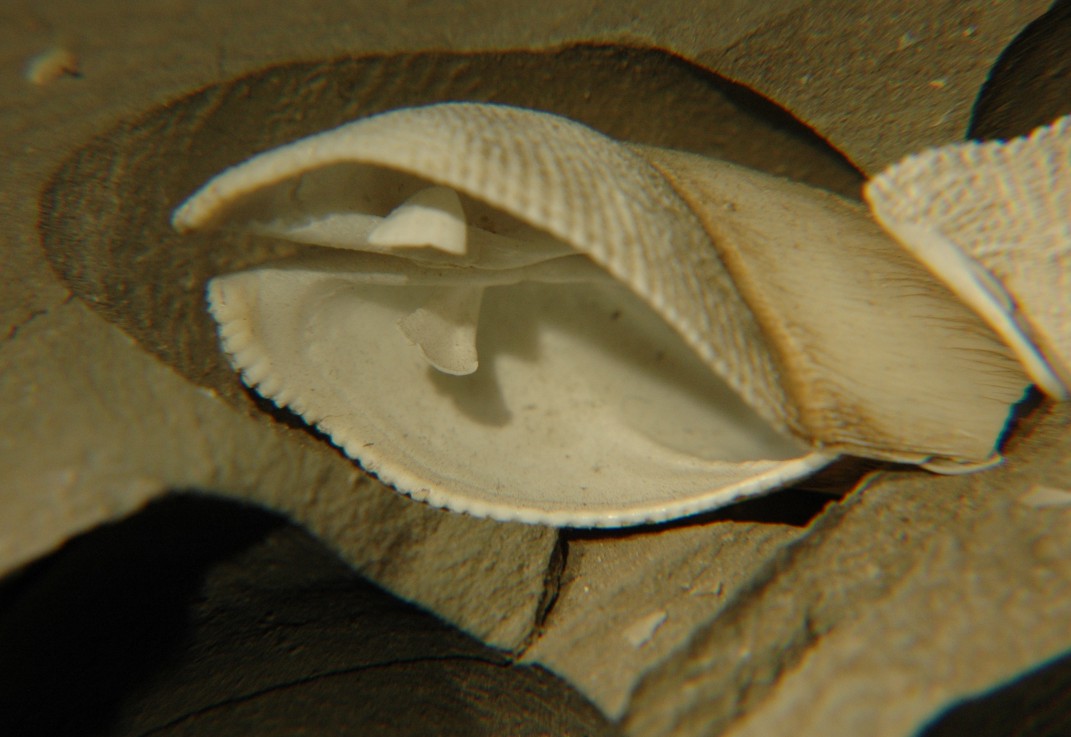
The anterior
end of the shell gapes widely to give room for the foot to
extend.
This view shows the shell of an individual in place in a broken piece
of
shale. I turned the broken rock over so the interior end of
the burrow
is exposed. A burrow of a neighboring individual can be seen
below,
and the shell of another neighbor appears to the right. Note
the
large myophores
(apophyses),
to which the foot anchors, inside the shell. The burrow
becomes more
narrow toward the entrance, which cannot be seen here but is down and
to
the right. If this individual were fully mature a calcareous callum
would have grown over the large anterior gape which is visible here.

Here is another view of the inside of the shell, showing the rounded
hinge,
the large
myophore
(apophysis),
and the protoplax
anterior of the hinge.
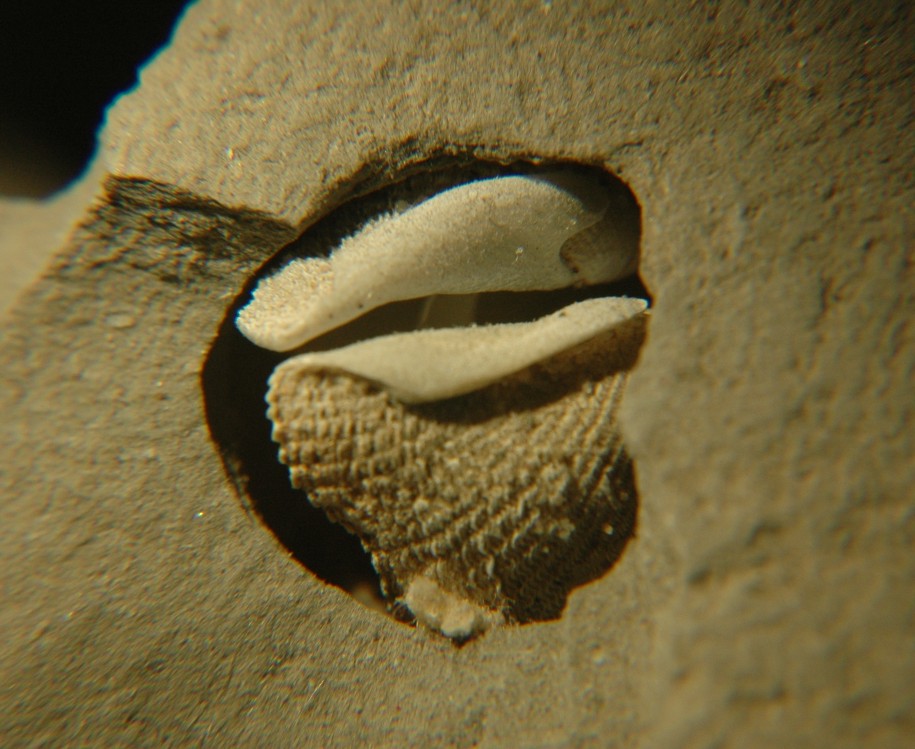
In this view, the rock has broken off at the very interior end of the
hole so the position of the shell while boring can be seen.
The anterior
teeth are used for boring. The sinuous flap on the dorsal
side of the shell is the protoplax.
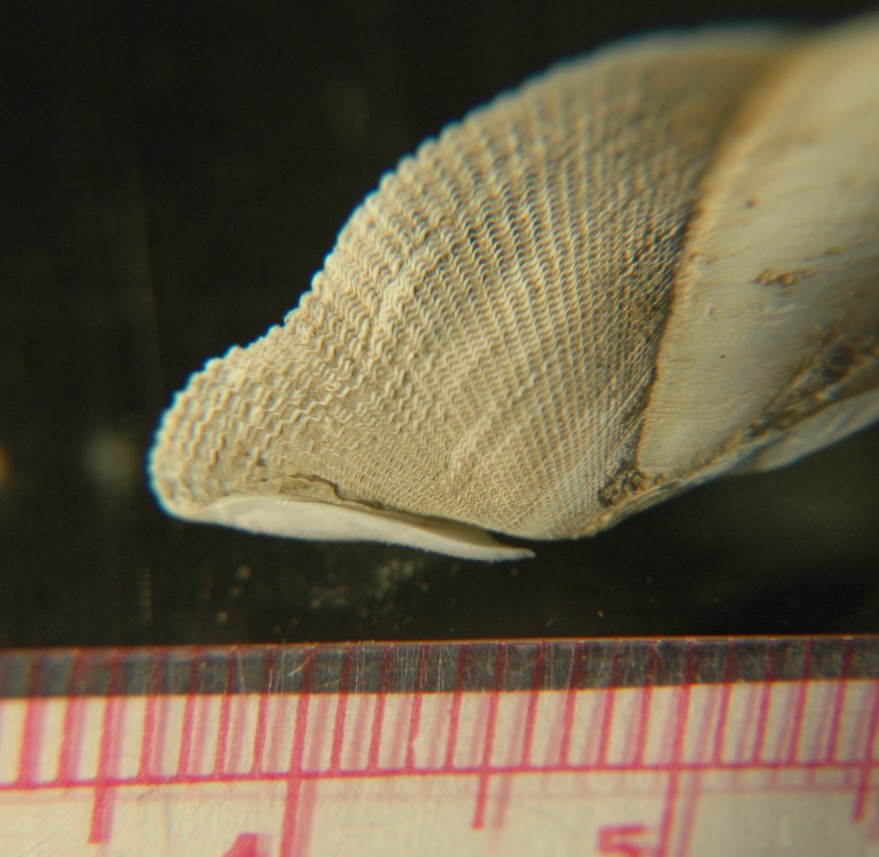
Here is another view of the anterior
end, with the protoplax
downward. Scale is millimeters (centimeters numbered).

This lateral and dorsal
view of the right valve shows how the anterior (left in the photo) end
is inflated relative to the posterior
(right in the photo) end. The protoplax
can be seen along the dorsal
(lower left) edge of the anterior
end, and the metaplax
can be seen along the dorsal
(lower right) edge posterior
to the umbo.
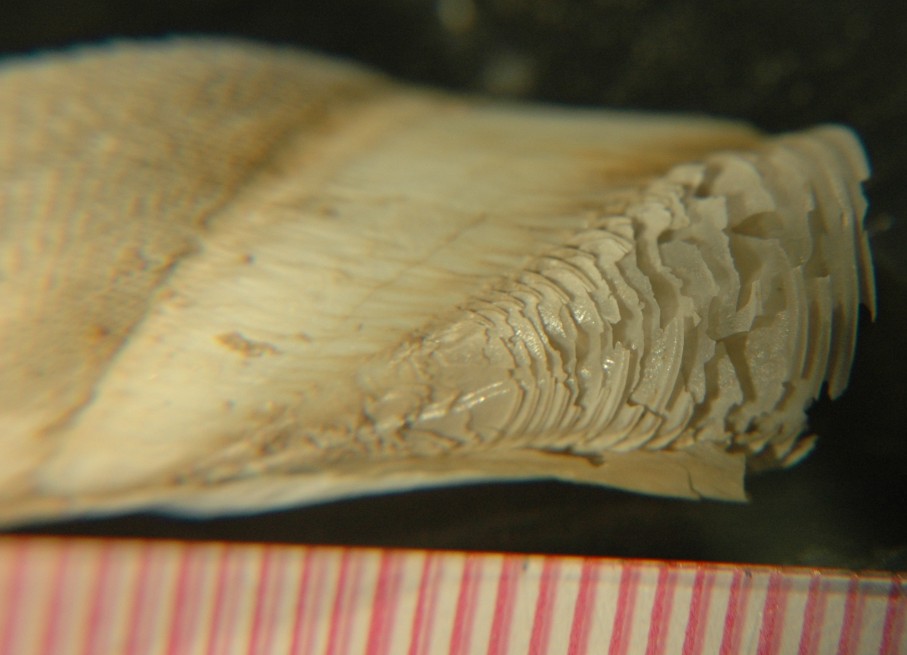
The posterior
end of the shell has the periostracum
formed into distinctive, overlapping chitinous plates. Note
that
the posterior
end is narrower than the anterior.
Authors and Editors of Page:
Dave Cowles (2006): Created original page
